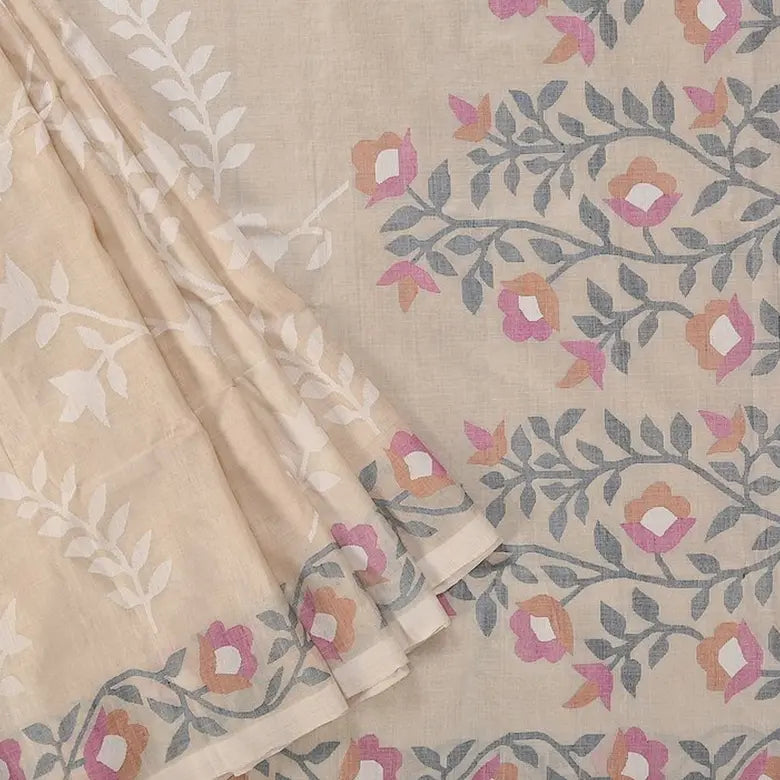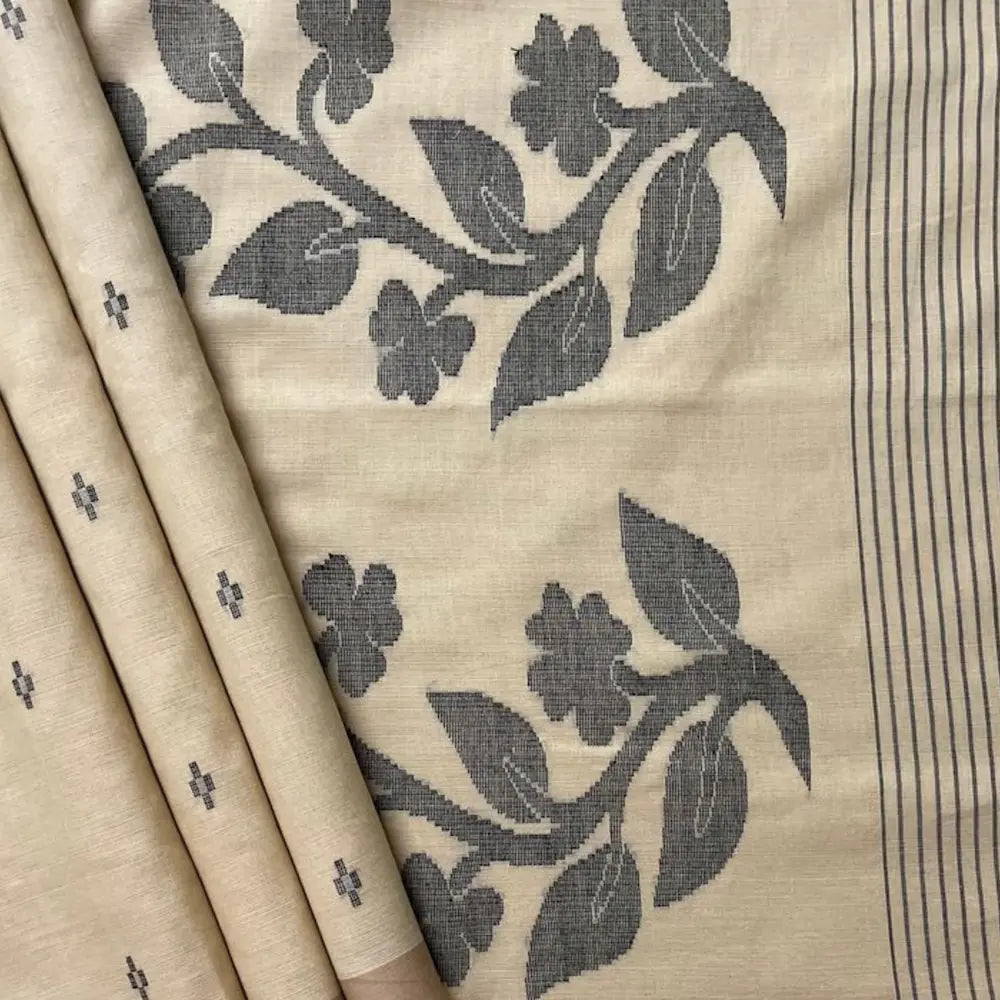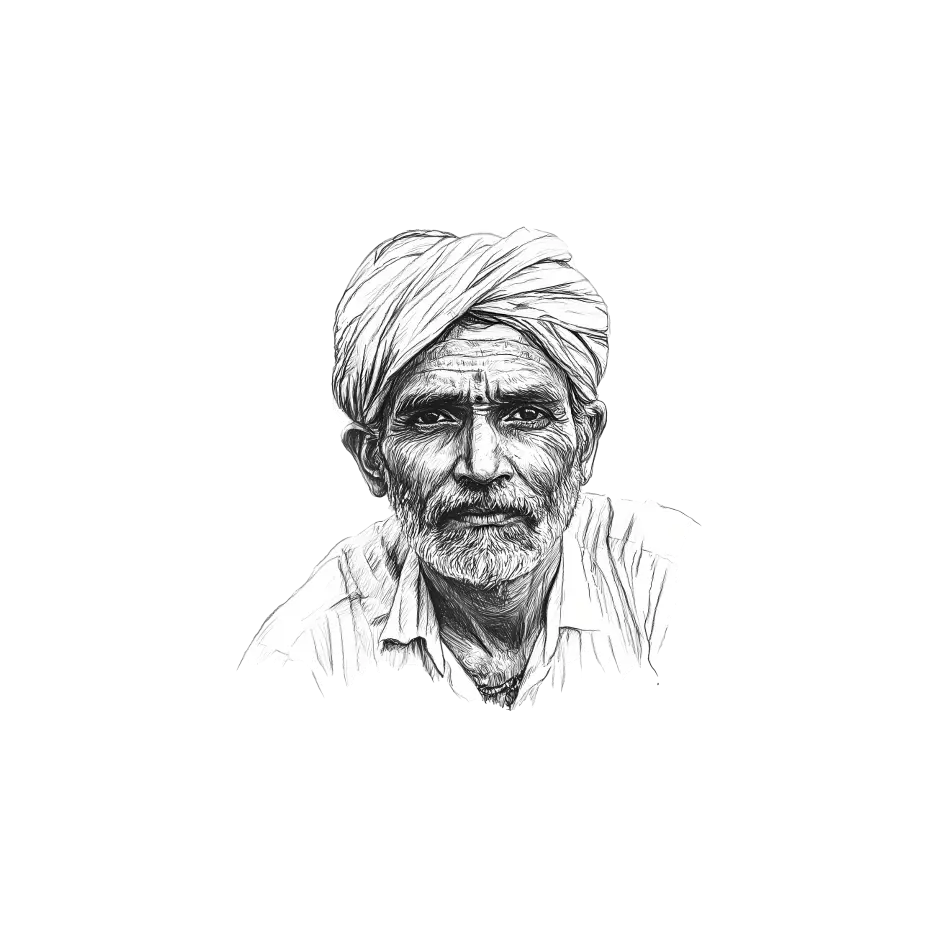
Jamdani Sarees: The Legacy of Bengal Weaves

A Heritage Woven in Air
Jamdani sarees, a poetic masterpiece from the looms of Bengal, are among the finest expressions of Indian handloom artistry. Originating from Dhaka, Bangladesh, during the Mughal era and later flourishing in West Bengal, Jamdani weaving is a rare art form cherished for its sheer elegance and painstaking craftsmanship. This UNESCO-recognized intangible cultural heritage is woven from the finest cotton. It is known for its featherlight texture and intricate motifs that appear to float on the fabric—earning it the name ‘woven air.’
Once reserved for Mughal royalty and European aristocrats, Jamdani was prized for its diaphanous muslin weave, which was so fine that an entire saree could pass through a signet ring. The craft, almost lost under British colonial rule, saw a revival through the dedication of master weavers who continue to weave history into every thread. Today, these sarees remain a symbol of heritage, sophistication, and exclusivity.

The Artistry: Design, Motifs, and Weaving Excellence
Jamdani sarees are a work of meticulous artistry, where motifs are not just decorative but symbolic, each telling a tale of tradition and meaning:
- Panna Hajar (Thousand Emeralds) – A mesmerizing pattern of tiny dots covering the fabric, representing infinite prosperity and abundance.
- Tercha (Diagonal Stripes) – Angular, dynamic patterns interwoven seamlessly, signifying movement and fluidity.
- Butidar (Dotted Flower Clusters) – Tiny floral clusters, appearing like scattered blossoms on the weave, reminiscent of Bengal’s lush gardens.
- Jal Pari (Netted Design) – An intricate mesh-like weave, embodying mystery and refinement.
- Duria (Polka Dots) – Classic round dots, offering a blend of tradition and contemporary appeal.
- Shankha (Conch Shells) and Kalka (Paisley) – Timeless symbols of Bengal’s spiritual and artistic heritage.
Each motif is woven by inserting extra weft threads into the fabric manually—no mechanical assistance, no shortcuts. This technique, known as discontinuous weft weaving, creates a rich texture with a three-dimensional effect. The labor-intensive nature of this process ensures that no two Jamdani sarees are ever exactly alike, making every piece a collectible work of art.

How to Identify a True Jamdani Saree
A genuine Jamdani saree stands apart in its craftsmanship:
- Transparency & Lightness: Authentic Jamdanis are ethereal, almost weightless, and feel like air against the skin.
- Handwoven Imperfections: Tiny irregularities in the weave signify authenticity, unlike powerloom versions which appear too perfect and stiff.
- Threadwork, Not Print: Run your fingers over the motifs—true Jamdani has a raised texture, unlike printed or machine-embroidered imitations.
Soft Yet Durable: Despite its sheer look, a real Jamdani is surprisingly strong, aging gracefully over time.

The Beauty of Handloom: A Testament to Artistry
Handwoven sarees are more than fabric; they are an expression of human skill and dedication. Unlike powerloom textiles, which focus on speed and mass production, handloom sarees retain an organic touch—each weave carrying slight variations, a signature of authenticity. The drape, softness, and breathable nature of handwoven fabric make them superior to machine-made alternatives, ensuring comfort and elegance that only improves with time.

Meet the Artist: Master Weaver Rafiqul Islam
Behind every Jamdani saree is a master artisan whose skills have been honed over generations. Meet Rafiqul Islam, a weaver from Bengal whose family has preserved this craft for over five generations. He spends weeks weaving a single saree, carefully placing each motif with precision. His devotion to this craft keeps this legendary textile tradition alive, offering saree connoisseurs an unparalleled masterpiece of grace and legacy.
